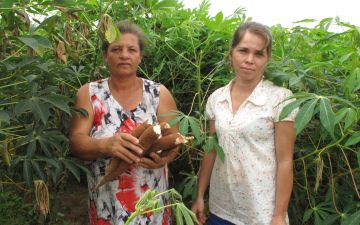Brazil’s school feeding program, the second largest in the world feeds 42 million of the country’s school children. Part of Brazil’s Zero Hunger Program, the school lunch program has not only helped reduce child hunger and malnutrition, but it has also started to change how children relate to and understand food, while promoting local agriculture.
Brazil’s constitution requires that 30 percent of the ingredients for school meals be sourced from local, family farms. In so doing, the country has helped some four million of the country’s small farmers and promoted rural development.
As do many countries around the world, Brazil has the double burden of malnutrition and obesity. Poor kids without access to sufficient, nutritious food have a growing access to junk food, and, as a result, obesity is on the rise. Public schools in Brazil are trying to tackle the problem—one of their most effective tools is school gardens. Kids grow their own food and decide what produce to use for their daily school meals, all while building a better understanding of their food and what it means to eat healthy.
Rhitu Chatterjee explores some of the successes of Brazil’s school feeding program—also trying to understand where it still falls short. The successes and shortcomings of this massive program have important lessons for the United States and other countries with school lunch programs.
